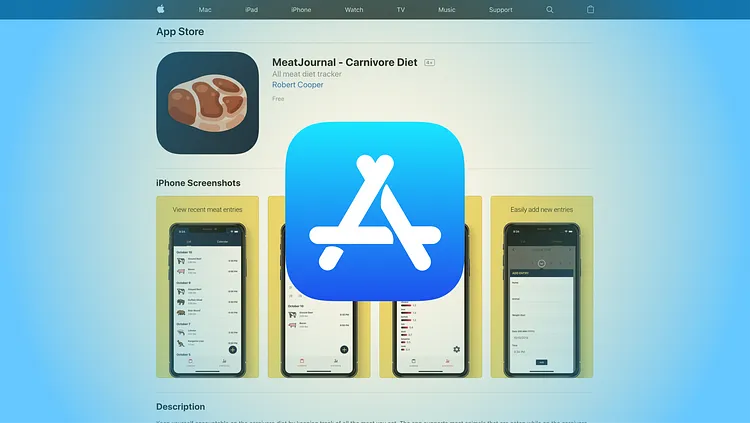From Idea to App Store: Building My First iOS App With React Native
 tony nwankwo
tony nwankwo
Introduction
Robert Cooper, a developer with a passion for creating useful applications, recently celebrated the acceptance of his first iPhone app into the Apple App Store. In this article, he shares the structured approach he took to navigate the entire app creation and release process.
Motivation
Cooper's motivation to build an iOS app stemmed from his desire to create something valuable for both himself and others. With prior experience in React Native, he felt confident in his ability to develop the app independently. Additionally, he saw the potential for passive income through app monetization, although it wasn't his primary objective.
App Idea
Choosing an app idea that aligned with his interests and addressed a unique problem, Cooper decided to create a food journaling app tailored for the carnivore diet. This diet, focusing on meat consumption, lacked dedicated apps, presenting an opportunity for Cooper to fill a void in the market.
Planning
Cooper emphasized simplicity in his app's design and functionality. By outlining key features for the initial and future versions, he ensured a clear vision and avoided overwhelming himself, especially as a first-time mobile app developer.
Design
The developer placed a strong emphasis on user interface design, collecting inspiration from existing apps and creating wireframes for essential screens. His commitment to aesthetics continued through the high-fidelity design phase, where he meticulously crafted each screen in Figma, utilizing licensed icons from FlatIcon.
Development
Opting for React Native due to his existing proficiency, Cooper focused solely on iOS development to streamline the process. Leveraging a React Native boilerplate with TypeScript and MobX, he ensured a smooth development experience. Continuous integration and deployment were set up using Visual Studio App Centre, allowing for efficient testing and deployment to iTunes Connect.
User Testing
While user testing through TestFlight provided limited feedback, Cooper gained valuable insights from a local UI/UX feedback meetup. Attendees offered suggestions for improvement and potential new features, enhancing the app's overall quality.
App Store Submission
Prior to submission, Cooper carefully reviewed the App Store guidelines and provided detailed notes for reviewers. Thoughtful screenshot design followed a popular trend, presenting the app within an iPhone frame. Within 24 hours of submission, Cooper received approval, and his app, MeatJournal, was live on the App Store.
Summary
The entire journey, from ideation to release, took one month, with a total cost of $151 CAD. Cooper plans to monitor app usage, gather user feedback, and explore additional features. Encouraged by his positive experience, he contemplates developing more apps for the App Store in the future.
What's Next
Cooper intends to continue using the app personally, exploring potential feature additions based on user feedback and download metrics. His positive experience has sparked an interest in developing more apps for the App Store, signaling a potential for future projects.
In conclusion, Robert Cooper's journey serves as an inspiring example of how a structured approach, coupled with a passion for problem-solving, can lead to the successful development and release of a valuable iOS app.
Subscribe to my newsletter
Read articles from tony nwankwo directly inside your inbox. Subscribe to the newsletter, and don't miss out.
Written by
